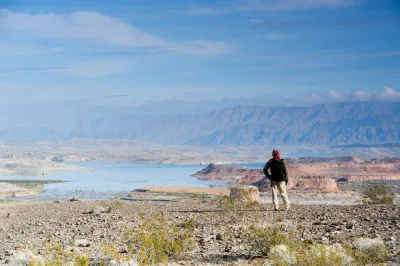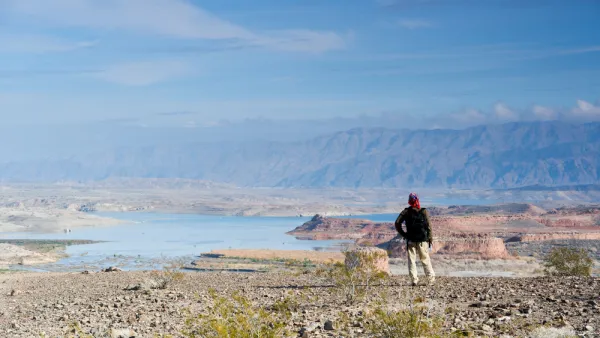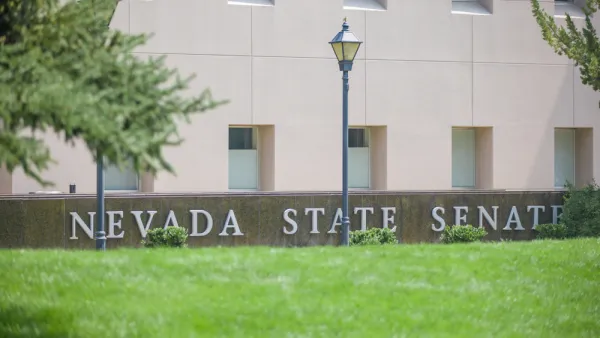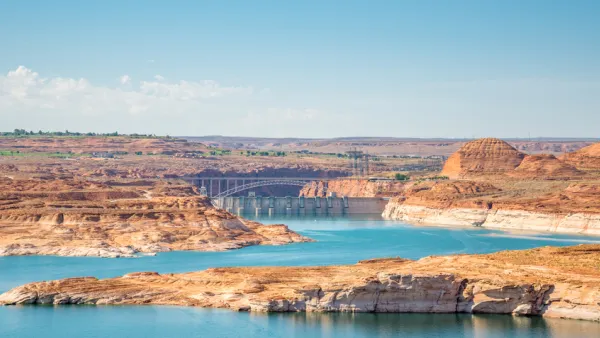California, Arizona, and Nevada are hammering out a plan to address the worsening drought along the Colorado River.

Ian James reports for the Los Angeles Times about a new effort underway in the U.S. Southwest to account for declining water flows and storage capacity on the Colorado River as the region continues to grapple with a once-in-a-millennium megadrought:
Two and a half years after signing a deal aimed at averting a damaging crisis along the Colorado River, water officials from California, Arizona and Nevada are discussing plans to take even less water from the shrinking river and leave it in Lake Mead in an effort to prevent the reservoir from falling to dangerously low levels.
James refers to the 2019 Colorado River Drought Contingency Plan Authorization Act, known commonly as the Drought Contingency Plan or DCP. The DCP was behind the first-ever supply reductions of Colorado River water for Arizona in January 2021. Upper Colorado River Basin states—Colorado, New Mexico, Utah, and Wyoming—followed in May 2021.
As for the new deal for California, Arizona and Nevada, James reports these salient details:
Representatives of water agencies from the three states said they are firming up the details of a deal that would leave an additional 500,000 acre-feet of water in the reservoir next year, and the same amount again in 2023 — about double the quantity of water used annually by Las Vegas and the rest of southern Nevada.
The ongoing drought along the Colorado River has left water levels on Lake Mead at record low-levels since the summer. If the three states can agree on the deal, dubbed the 500+ Plan, California would agree to water reductions prior to Lake Mead reaching levels that would trigger the DCP. The 500+ Plan "would partially involve securing money to pay some water users to voluntarily relinquish water, according to James.
FULL STORY: California, Arizona and Nevada in talks on new plan to save Colorado River water

Analysis: Cybertruck Fatality Rate Far Exceeds That of Ford Pinto
The Tesla Cybertruck was recalled seven times last year.

National Parks Layoffs Will Cause Communities to Lose Billions
Thousands of essential park workers were laid off this week, just before the busy spring break season.

Retro-silient?: America’s First “Eco-burb,” The Woodlands Turns 50
A master-planned community north of Houston offers lessons on green infrastructure and resilient design, but falls short of its founder’s lofty affordability and walkability goals.

Test News Post 1
This is a summary

Analysis: Cybertruck Fatality Rate Far Exceeds That of Ford Pinto
The Tesla Cybertruck was recalled seven times last year.

Test News Headline 46
Test for the image on the front page.
Urban Design for Planners 1: Software Tools
This six-course series explores essential urban design concepts using open source software and equips planners with the tools they need to participate fully in the urban design process.
Planning for Universal Design
Learn the tools for implementing Universal Design in planning regulations.
EMC Planning Group, Inc.
Planetizen
Planetizen
Mpact (formerly Rail~Volution)
Great Falls Development Authority, Inc.
HUDs Office of Policy Development and Research
NYU Wagner Graduate School of Public Service




























